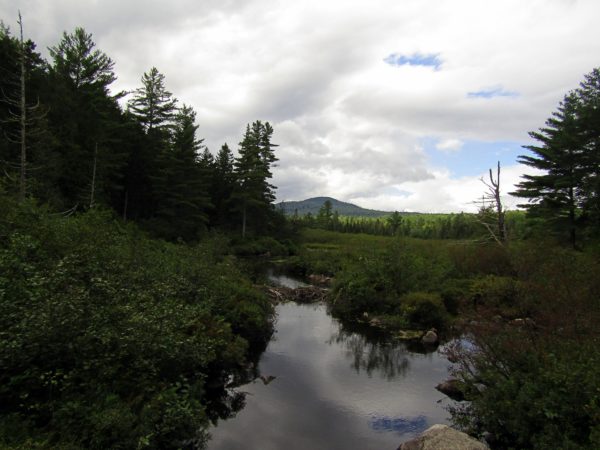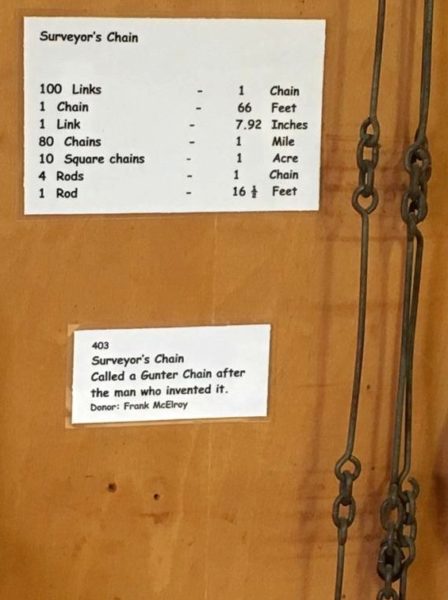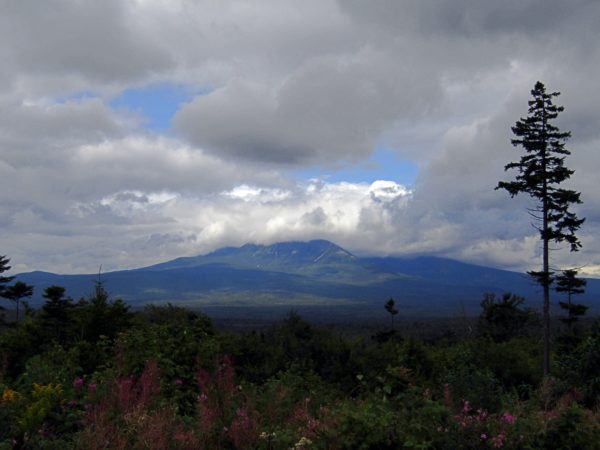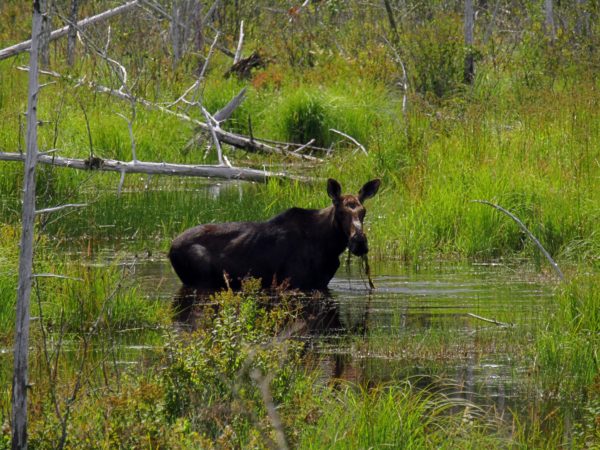
By Executive Director Nancy Smith
|| I’ve been paying attention to the very public debate about the Katahdin Woods & Waters National Monument with the same curiosity as most Mainers, and this past weekend, I traveled a few hours north to explore the Katahdin Region. The drive up I-95 is an easy one and pleasant as the suburbs give way to trees, lots and lots of trees. Taking the Sherman exit (264), my first stop was the Patten Lumbermen’s Museum I’d visited 30 years ago.  No longer a single shed housing dioramas of logging from the 1800’s and early 1900’s, the Museum now host multiple buildings full of items as small as horseshoes and as large as the two Lombard Log Haulers, one diesel and the other, clearly the pride of the museum in its individual display barn, powered by a steam engine.
No longer a single shed housing dioramas of logging from the 1800’s and early 1900’s, the Museum now host multiple buildings full of items as small as horseshoes and as large as the two Lombard Log Haulers, one diesel and the other, clearly the pride of the museum in its individual display barn, powered by a steam engine.
We saw horse-powered wagons and sleighs, even a 2-horse cutting saw, and I found a set of tools like those I’d used in the 1980’s when I was a forest technician for International Paper, based out of Lincoln. The calipers for measuring a tree’s diameter, log scale sticks to estimate the board foot volume of merchantable lumber in each log, and especially the metal surveyors chain to pace off distances in the woods, all brought back memories of cruising timber in T1R6, just outside Medway and Glenwood, east of the Haynesville woods Dick Curless featured in the song “A Tombstone Every Mile”.
Saturday evening, I joined a happy crowd at the Mt. Chase Lodge for a fundraiser BBQ, where the money raised will support local students enjoying the outdoors that surround them. The Moxie & Milk Chugging Contest was the highlight of the evening. Later that night I enjoyed the quiet setting of my Airbnb rental at the Mountain Glory Farm, where earlier in the day I’d walked the footpath along a horse pasture and observed the playful antics of Amish children living on the farm.
Sunday began with breakfast at Debbie’s Pizza and Deli, where locals gathered at a large table and those of us from away (I wasn’t the only one) smiled while listening to their banter with the waitress. Then, it was off to the Katahdin Woods & Waters National Monument. Knowing I didn’t have time to drive the full Loop Road, I was satisfied to get a taste of this place with the few hours available. Ash Hill on Rte 11 just south of Patten offered a distant view of the mountains to the west, though Katahdin was blanketed in clouds. The map provided by the National Park Service ranger stationed at the Lumbermen’s Museum the day before was quite helpful, as were the tips she offered on how to find the access road off Rte 11, given the lack of signage due to the Governor’s prohibition on them. Not to worry, just go straight where the main road takes a hard left, by the house with the big “No National Park” sign out front. The gift of these lands is still a point of contention for some in the area.

I’m not sure what I expected, but the access road was a typical logging road, with turnouts along the way but mostly room enough for two passenger vehicles to pass, and signs warning sightseers to give logging trucks the right of way. We made several stops along water, at day-use areas and a new campground with several parties camped out. Our truck passed about 20 other vehicles on the 3-hour trek, and all but the Nebraska pickup had Maine plates. I learned in conversation with visitors from Southwest Harbor that they’d come to see what all the fuss was about, and to explore it before the tourists discovered this part of Maine. The doubters say the National Monument is nothing but cutover woods, and that is much of what you see along the road. But that’s just for now. In five years it will change, and then ten, and twenty, and a hundred years. That’s the point of this gift; this undeveloped area will belong to all of us, from this time forward, with its views of Katahdin and the lakes, and the open space I once took for granted but now fully appreciate.
More information about the new national monument available on the National Parks Service website: https://www.nps.gov/kaww/
The highlight, of course, was the Lookout Point, where the view reached from the base of Millinocket Lake, up the mountain range to Katahdin, with its head still in clouds, though the North and South Basins were easily visible. Wildlife sightings in the Monument consisted only of a grouse darting in front of the truck and a hawk in pursuit of something on the side of the road; dropping down and rising back up in the sky in a matter of seconds. Both were too quick for my camera.
As we headed back down Rte 11, the Katahdin Woods & Waters Scenic Byway, I spied a moose feeding in a bog and we turned the truck around to get a better look. And there she posed, until I’d taken my fill of photos, as did two guys in the car with Mass plates, who slowed down when they saw me and my camera. The cow moose just quietly fed on grasses in the bog, lowering her whole head into the water and bringing it back up again as she casually chewed. Her ears perked up when the second car stopped, but she never changed her pace. I’m grateful for that.

Many have come to accept the National Monument in their backyard and are paying attention to what’s next. Some are still strongly opposed and share that opinion with signs on their front lawns. This is a big change, and it’s understandable for some to focus on the risks involved. No one expects the new National Monument to replace the forest products industry. Completing its first year under this official designation, these lands don’t yet provide as great a variety of activities for visitors as they will. But they are drawing more people to the area; people like me who spend money for food, gas, and a place to stay. The Lumbermen’s Museum has seen double the number of visitors this year and I think that’s an important point. The heritage of this place has long been a mix of timber, wildlife, and solitude. I think that will continue to be. With shifting markets and new technologies fundamentally changing the forest economy, the time seems ripe to introduce to the Katahdin Region the National Monument, offering the remote outdoor experience people from Maine and beyond are willing to pay to experience. We’re all rooting for you, Katahdin Region!
Nancy Smith is the Executive Director of GrowSmart Maine and has worked as a forester and farmer in Maine.
